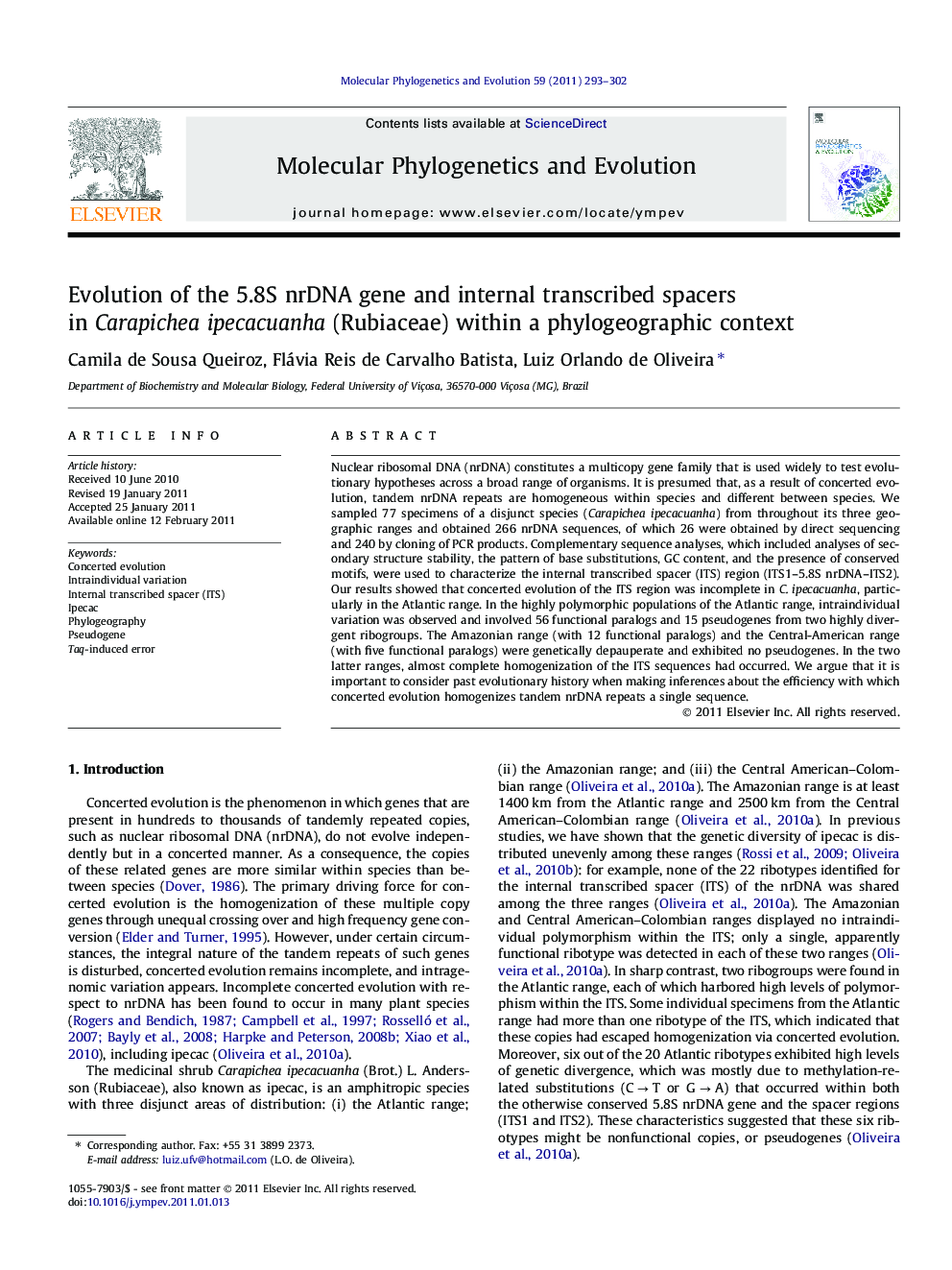| Article ID | Journal | Published Year | Pages | File Type |
|---|---|---|---|---|
| 2834206 | Molecular Phylogenetics and Evolution | 2011 | 10 Pages |
Nuclear ribosomal DNA (nrDNA) constitutes a multicopy gene family that is used widely to test evolutionary hypotheses across a broad range of organisms. It is presumed that, as a result of concerted evolution, tandem nrDNA repeats are homogeneous within species and different between species. We sampled 77 specimens of a disjunct species (Carapichea ipecacuanha) from throughout its three geographic ranges and obtained 266 nrDNA sequences, of which 26 were obtained by direct sequencing and 240 by cloning of PCR products. Complementary sequence analyses, which included analyses of secondary structure stability, the pattern of base substitutions, GC content, and the presence of conserved motifs, were used to characterize the internal transcribed spacer (ITS) region (ITS1–5.8S nrDNA–ITS2). Our results showed that concerted evolution of the ITS region was incomplete in C. ipecacuanha, particularly in the Atlantic range. In the highly polymorphic populations of the Atlantic range, intraindividual variation was observed and involved 56 functional paralogs and 15 pseudogenes from two highly divergent ribogroups. The Amazonian range (with 12 functional paralogs) and the Central-American range (with five functional paralogs) were genetically depauperate and exhibited no pseudogenes. In the two latter ranges, almost complete homogenization of the ITS sequences had occurred. We argue that it is important to consider past evolutionary history when making inferences about the efficiency with which concerted evolution homogenizes tandem nrDNA repeats a single sequence.
Graphical abstractFigure optionsDownload full-size imageDownload as PowerPoint slideHighlights► Multiple types of the tandem nrDNA repeats co-exist within Carapichea ipecacuanha. ► Intraindividual variation for the ITS was associated with geographic range. ► The Atlantic range harbored both intraindividual variation and pseudogenes. ► The Amazonian and Central-American ranges were depauperate and showed no pseudogenes. ► Past evolutionary history shapes the concerted evolution of rDNA repeats.
